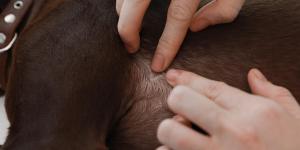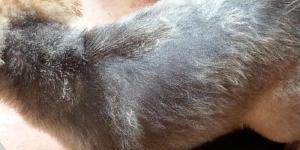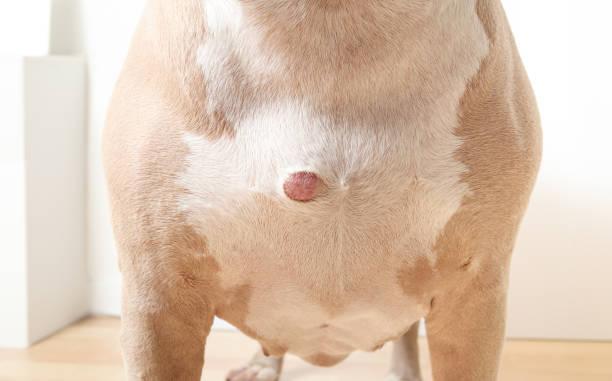What Does a Hard Bump Mean on a Dog?



See files for Dogs
Is your dog developing a hard lump under its skin? While finding a lump on your dog can be concerning, not all bumps are harmful. However, as a pet parent, you want to ensure any unusual changes in your dog's body receive proper attention. Understanding the causes, recognizing symptoms, and knowing when to consult a veterinarian can help you make informed decisions for your pet’s health.
In this AnimalWised article, we'll help you understand what causes hard lumps in dogs, how veterinarians diagnose them, and what treatments are available for your pet.
Malignant tumor
When you find a hard lump on your dog, it's natural to worry about cancer. While many lumps are harmless, some can indicate serious conditions that require immediate veterinary attention.
A tumor is any abnormal tissue growth that creates a lump or mass in your dog's body. These growths can be categorized into two main types:
- The first type consists of benign tumors, which generally pose minimal health risks and respond well to treatment.
- The second type includes malignant tumors, which can threaten your dog's health and may require complex treatment plans.
Several characteristics may suggest a tumor could be malignant. Pay close attention to any lumps showing rapid growth rate, as this can be a concerning sign. Additionally, an unusually firm texture or dark to black coloration might indicate a more serious condition.
However, visual inspection alone isn't enough for a proper diagnosis. Your veterinarian will need to perform specific diagnostic procedures to determine the nature of the growth. These procedures typically include diagnostic imaging to examine the internal structure of the lump. Your vet may also perform a fine-needle aspiration to collect tissue samples, or in some cases, recommend a biopsy for detailed analysis.
Treatment
Once your veterinarian confirms a malignant tumor diagnosis, they will develop a tailored treatment plan for your dog. The most common treatment approach involves surgical removal of the tumor when possible. In some cases, your vet may recommend medication protocols or chemotherapy treatments, particularly if the cancer has spread beyond its original location.
The specific combination of treatments your veterinary oncologist recommends will depend on several factors. They'll consider the tumor type and its location in your dog's body, along with determining whether the cancer has spread to other areas. Your dog's overall health condition also plays a crucial role in determining the most appropriate treatment approach.
Most importantly, early detection often leads to better outcomes for your dog. If you notice any unusual lumps or growths while petting or grooming your dog, contact your veterinarian promptly for an examination. Your quick action could make a significant difference in your dog's treatment success.
Concerned about distinguishing between different types of lumps? Our detailed guide helps you understand the various growths that can affect our dogs.
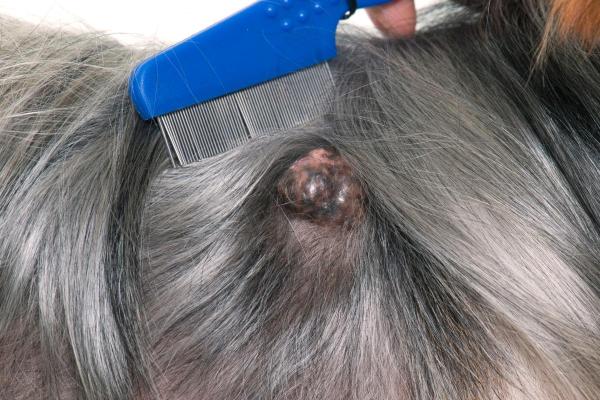
Abscesses
A hard lump on your dog might signal an abscess, which is a collection of pus beneath the skin that forms in response to bacterial infection. This condition requires proper veterinary care to prevent complications and ensure complete healing.
An abscess develops when your dog's body responds to a bacterial infection. The resulting pus consists of dead cells and bacteria, forming a protective response to fight the infection. Several factors can lead to abscess formation in dogs, including contaminated wounds, foreign objects penetrating the skin, or animal bites.
Dogs who frequently explore outdoor areas face a higher risk of developing abscesses from thorns, spikes, or other sharp objects.
When an abscess first forms, it typically feels soft due to the liquid nature of the pus inside. As time passes, the abscess can become harder through two different processes. The pus may dehydrate and solidify, or your dog's body might form a firm capsule around the infection site to contain it.
Treatment
Your veterinarian will perform a needle aspiration to properly diagnose an abscess. This procedure involves extracting a small sample of the lump's contents for microscopic examination. After confirming the presence of pus cells, your vet will develop a treatment plan.
The primary treatment approach usually begins with antibiotics to combat the underlying infection and help the body reabsorb the accumulated pus. However, if the abscess persists despite antibiotic treatment, your vet may need to perform a drainage procedure. This involves carefully opening the abscess, removing the pus, and thoroughly cleaning the infected area to promote proper healing.
For dogs who spend time in outdoor environments, preventive care becomes especially important. Regular checking for wounds or foreign objects after outdoor activities can help catch potential problems early.
Discover more about the different types of abscesses and how to spot them in our other article.
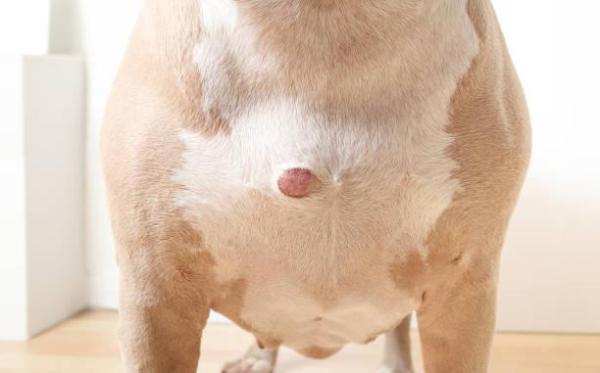
Inflammatory nodules
When you discover a hard lump on your dog, it might be an inflammatory nodule. In simple words, an inflammatory nodule is a natural response of your dog's body to various triggers. These nodules often develop in the skin layers as your dog's immune system reacts to specific stimuli.
Most commonly, these nodules develop when the body encounters microorganisms, fights off parasites, or experiences allergic reactions. The formation of these lumps represents your dog's immune system working to protect the body from perceived threats.
A frequent example of inflammatory nodules occurs after routine vaccinations. Following a subcutaneous vaccine injection, your dog might develop a small, firm lump at the injection site. This reaction occurs because the body responds to the vaccine components, which contain carefully prepared microorganisms designed to stimulate immunity.
In some cases, these vaccine-related lumps may undergo calcification, creating a long-lasting hard spot under the skin. While this might concern you, these calcified nodules typically pose no health risk and often resolve without intervention.
Treatment
Your veterinarian will perform a careful examination of any suspicious lumps, typically including a sample analysis to identify the types of cells present within the nodule.
This examination helps determine the underlying cause of the inflammation and guides the treatment approach. In cases where parasites trigger the inflammation, your vet may prescribe antiparasitic medications. When inflammation is the primary concern, anti-inflammatory treatments might be recommended. However, many mild cases of inflammatory nodules resolve naturally without requiring any medication.
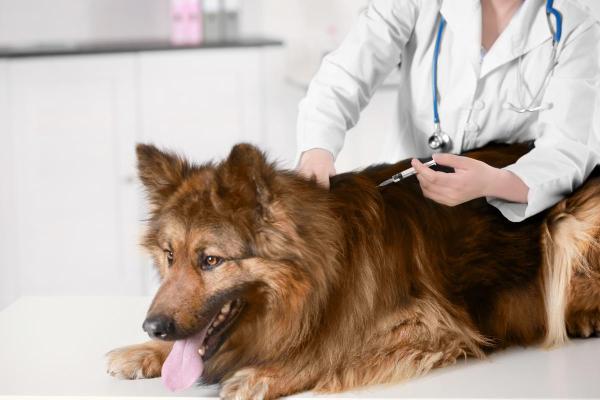
Cysts
A hard lump on your dog may turn out to be a cyst, which forms when normal bodily fluids or materials become trapped within tissue.
Cysts develop when your dog's body experiences a blockage in a gland's drainage channel. This blockage prevents normal secretions from flowing properly, leading to fluid accumulation that creates a pocket within the tissue. Since these blockages can occur in any gland throughout your dog's body, cysts may appear almost anywhere on your pet.
The consistency of a cyst varies depending on its contents and age. Some cysts contain liquid material, giving them a softer, more fluid-like feeling when touched. Others contain more solid substances, which create firm, hard lumps under your dog's skin.
Treatment
While cysts generally don't pose serious health risks to your dog, proper treatment ensures your pet's comfort and prevents potential complications. The most effective treatment typically involves surgical removal of the entire cyst structure.
Following surgery, your vet may prescribe additional treatments to prevent recurrence and support healing. Regular monitoring of the surgical site and following your vet's post-operative instructions will help ensure successful recovery. Most dogs recover quickly from cyst removal procedures and can return to their normal activities once healing is complete.
Noticed swelling between your dog's toes? Discover what those painful paw growths might mean in our other article.
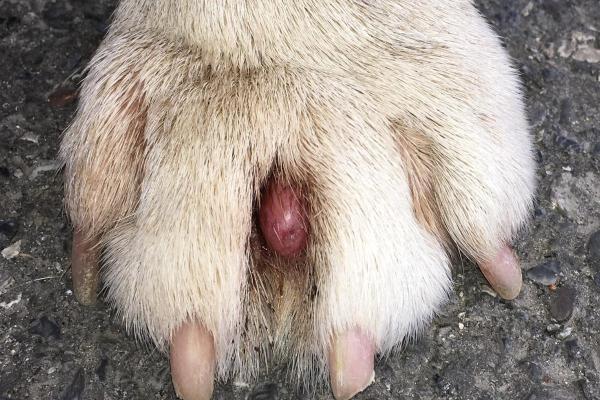
Lipoma
A common discovery in older dogs is the lipoma, which is a generally harmless collection of fatty tissue that forms beneath the skin. These lumps appear more frequently as your dog ages, particularly after they reach seven or eight years old.
At its core, a lipoma consists of adipocytes (fat cells) that cluster together in your dog's tissue. These fatty accumulations form soft, movable masses under the skin. When you gently press a typical lipoma, the tissue gives way slightly, similar to pressing on soft butter. This distinctive characteristic often helps veterinarians with initial assessment.
While most lipomas maintain their soft texture, some may become firmer over time through two different processes:
- The fatty tissue might lose moisture and become dehydrated, creating a harder mass.
- Alternatively, your dog's body may form a capsule around the fatty tissue, resulting in a firmer structure. These changes occur more commonly in smaller lipomas and can make them feel more like other types of tumors.
Treatment
Despite their typically benign nature, proper veterinary examination remains important when you discover any new lump on your dog. Your veterinarian will perform a cytology test, extracting cells from the mass for microscopic examination. Fat cells have distinct characteristics that make them easily identifiable under a microscope, leading to reliable diagnosis.
Since lipomas don't pose health risks, the decision to remove them depends on several factors. Your vet will consider:
- The size of the lipoma
- Its location on your dog's body
- Whether it interferes with movement or comfort
- Your dog's overall health status
Many lipomas can safely remain in place with regular monitoring. However, removal might be recommended if the lump interferes with your dog's normal activities or grows to an uncomfortable size. Your veterinarian will guide you through the best course of action for your dog's specific situation.
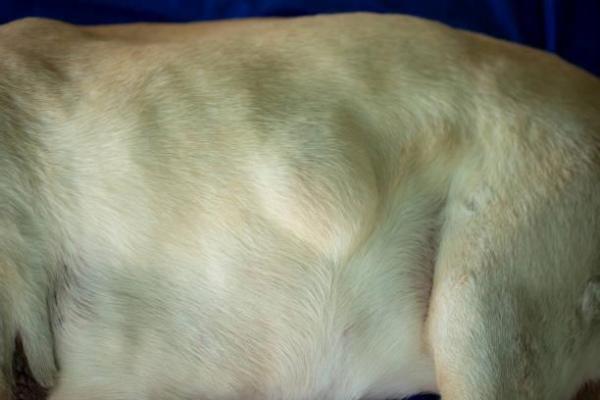
Lymph nodes
Your dog's body contains a sophisticated immune system that includes lymph nodes. These are natural structures that play a vital role in fighting disease.
Lymph nodes serve as your dog's natural filtration system, processing lymph fluid that circulates throughout the body. These small, bean-shaped structures act like security checkpoints, filtering out harmful substances and helping coordinate immune responses when your dog encounters infections or other health challenges.
Several lymph nodes can be felt during regular pet care, though they're usually small and subtle. The most common locations include:
- Under your dog's jaw
- Along the neck area
- Behind the knee joints of the rear legs
During normal immune responses, lymph nodes may increase in size as they work harder to protect your dog's health. This enlargement often serves as an early warning system, indicating that your dog's body is actively fighting against infection or disease. While enlarged lymph nodes show your dog's immune system is working, they also signal the need for veterinary attention to identify the underlying cause.
Treatment
Whether you've discovered enlarged lymph nodes or other types of lumps on your dog, professional veterinary assessment remains crucial. Your veterinarian can determine whether swollen lymph nodes indicate a temporary immune response or signal a more serious condition requiring treatment.
Think your dog might be fighting an infection? Learn to spot the early warning signs with our other article.
This article is purely informative. AnimalWised does not have the authority to prescribe any veterinary treatment or create a diagnosis. We invite you to take your pet to the veterinarian if they are suffering from any condition or pain.
If you want to read similar articles to What Does a Hard Bump Mean on a Dog?, we recommend you visit our Skin problems category.


